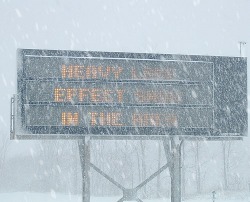Of all the cities and towns in the United States the regions that tend to have the most snowfall every year are areas along the heaviest lake effect snow belts (Michigan's upper peninsula and the Tug Hill Plateau region of New York), areas in the foothills of the Rockies and Sierra Nevada's, and lastly area in the valleys and mountains of Alaska. It seems obvious these are the places that would be getting the most snow as they have a continues moisture source (Great Lakes) and they are in the perfect locations for providing the lift for snowfall to occur (foothills). The snowiest town in all of the U.S. is believed to be Valdez, Alaska with an average of 326.3" of snow EVERY YEAR! That is about 27 feet of snow!!! If you are not a fan of snow you will certainly need to stay away from there and I'm sure their only mode for transportation is sled or snowmobile. So as someone who is used to getting up to 3 feet of snow in a day in Upstate NY where I'm from, I can't even imagine this much snow! For all you weather weenies who ask why Valdez gets so much snow when it's in a valley and on the Pacific Coast, 2 words.....Aleutian Low. So when any of you New Englanders decide you want to complain about your little baby Nor'easters, think twice, you could be living in Valdez, AK.
For more on the snowiest cities visit: http://www.weather.com/outlook/weather-news/news/articles/snowiest-six-cities_2011-11-29?page=1









